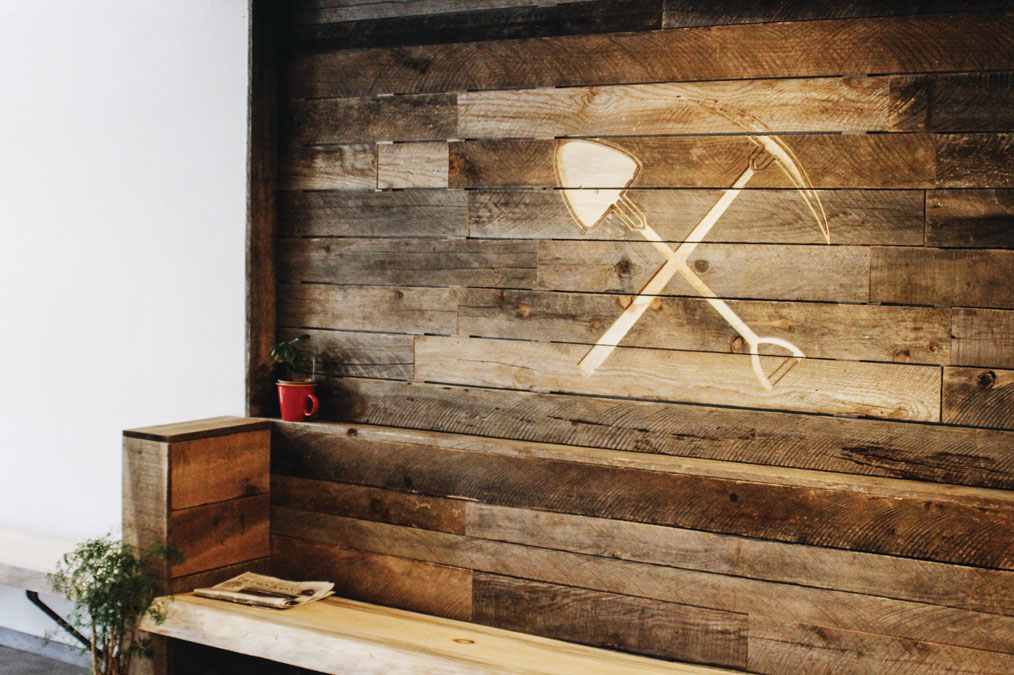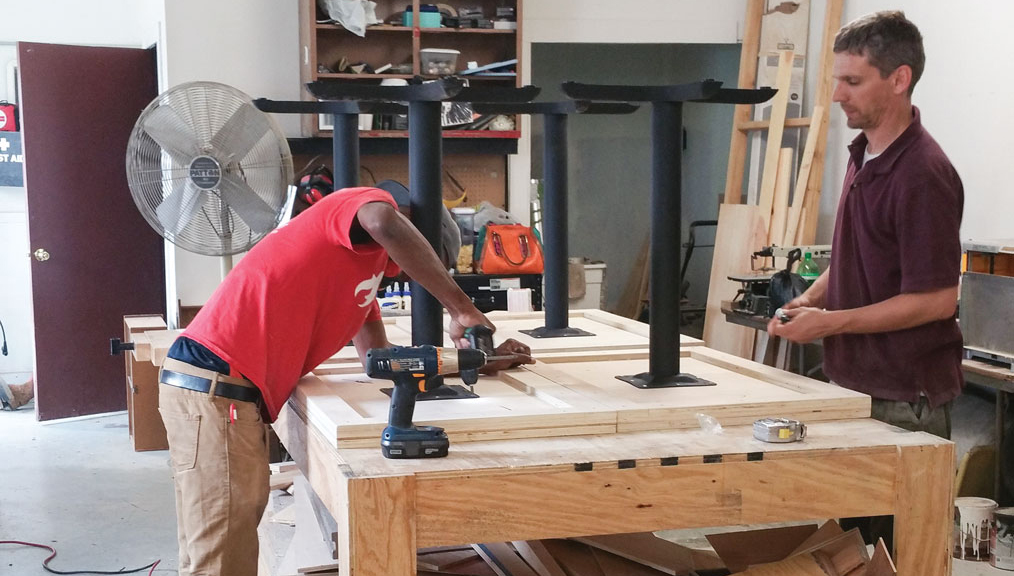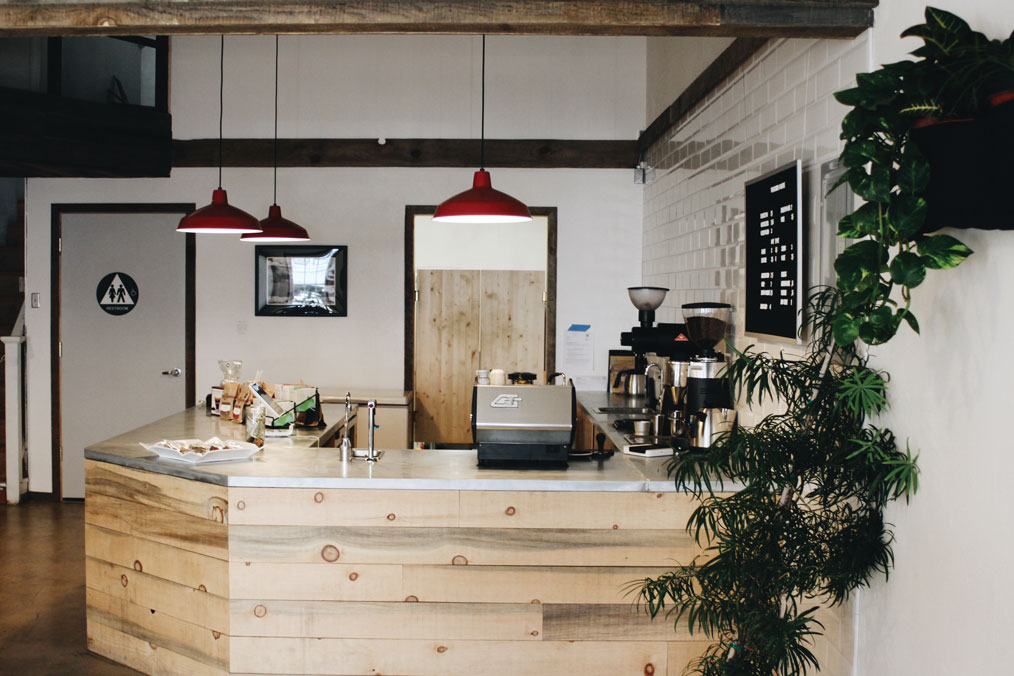In January 2014, then-California governor Jerry Brown declared a state of emergency to address three consecutive years of drought. The lack of recent rainfall had lowered reservoir levels and perpetuated wildfires.
As the government scrambled to mitigate the damages, one particular scourge flourished: bark beetle populations increased exponentially in California forests, killing millions of drought-ravaged trees.
As an entrepreneur in the middle of a café build-out when the beetles struck, Troy Carle decided to spin a serious negative into a small positive. As local fire departments worked around the clock to chop down the dead trees—at one point offering to drop off free loads of infected logs to homeowners in the area—Carle took home as much of the wood as he could.

“We were really excited to get our hands on it because it’s interesting to look at and beautiful,” says Carle, who used the wood to build bench seating in Union Hill, his new café in Sonora, California. “We thought it was cool, but we’re also putting it to use—otherwise, it’s just getting chipped up and rotting around here.”
Savvy Scavenging
As interest in sustainable living gains traction and recycling, re-sourcing, and repurposing building materials become increasingly popular, new businesses arise to serve growing demand. L!VE Café in the Oak Park neighborhood of Chicago procured used tables, shelving, and supplies for its bar from local re-distributors of materials that would have gone to waste decades ago.
L!VE CEO Reesheda Washington says they went to places like ReUse Depot and ReStore to pick up metals, wood, and electrical supplies thrown away or rescued from demolition projects. “We were able to capture the industrial look that we were looking for in our space without having to purchase a lot of new material,” Washington says.

Habitat for Humanity, a non-profit organization that builds housing for qualified, low-income families in almost 1,400 communities nationwide, sells scraps from construction, used materials, appliances, supplies from teardowns, and donated items in its ReStore facilities at a fraction of retail costs. Ten such retail stores serve the Chicago area alone. Hundreds more have sprung up across the country and exploded in popularity as more and more business owners look to repurposed materials for less-expensive build-outs.
Lend Me Some Sugar
Relying on second-hand stores alone to supply low-cost materials doesn’t always cut it—especially when you have a specific aesthetic in mind. Those looking to outfit their café with re-sourced and recycled materials should also look to the community they’re going to serve.
Brick Coffee Co. in Norwood, Ohio, opened in a small section of a local church that had gone unused for a decade-and-a-half. The café partnered with the church pastor to install its own entrance and acquired many free or low-cost building supplies the old-fashioned way: by interacting with other community members and building a local network. Co-founder Zach Clark even found someone to help him bend pieces of leftover steel he’d salvaged for Brick’s bar.
“We asked our friend Rob—who’s from here—and he said, ‘Yeah, I’ve got a buddy who could do that for you,’” says Clark. “Sometimes it’s just a matter of knowing a person who knows a person.”
Where Old Meets New
Building a café with sustainable and recycled materials necessitates patience, a willingness to pivot, and an ability to embrace the unexpected.
Recycling original building materials isn’t always realistic; sometimes, new materials are the only answer—especially when abiding by construction codes. Brick Coffee Co. discarded many old cinder blocks and scrap metal that couldn’t be repaired. Union Hill balanced old and modern by juxtaposing zinc countertops and Italian espresso tools with reclaimed lumber.
“In my mind, I split the space into modern and old, and we were able to do that,” says Carle, who provided the majority of the design layout and construction for Union Hill after years of planning. “I don’t know how to say that we did it, except that we did it.”
Cover photo courtesy of L!VE Café. This article was originally published on February 1, 2017 and has been updated according to Fresh Cup’s current editorial standards.

















